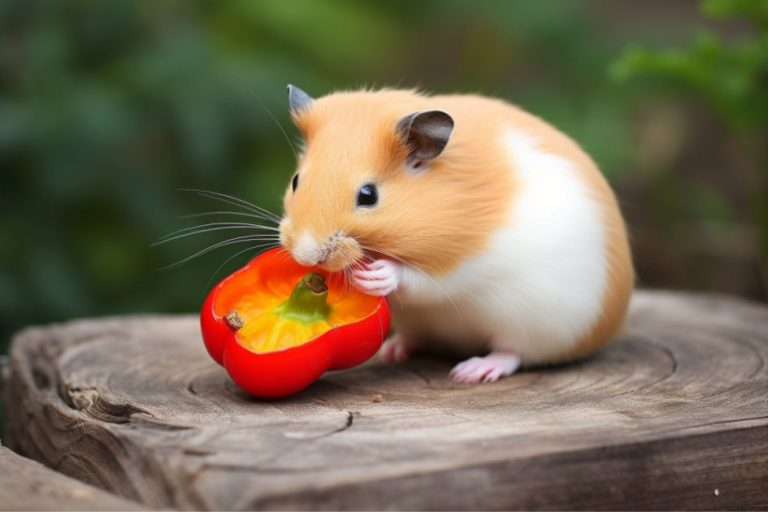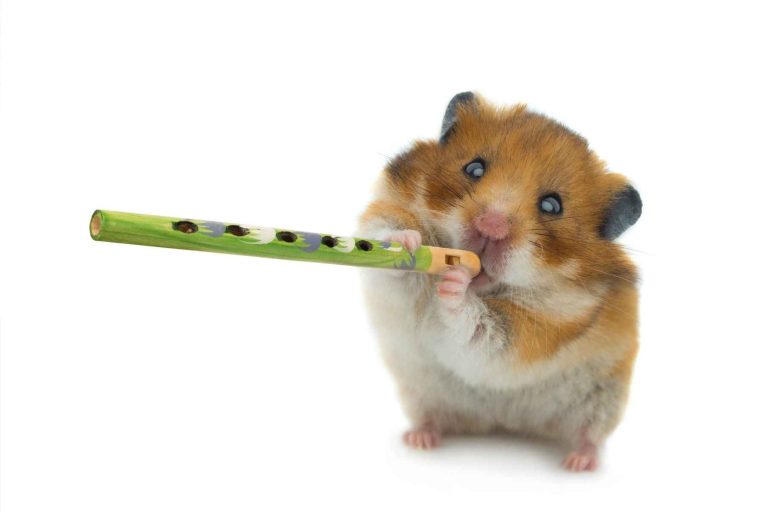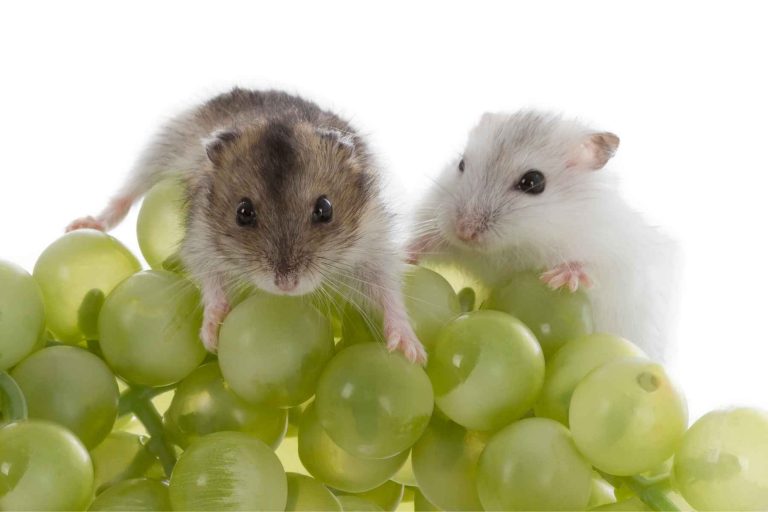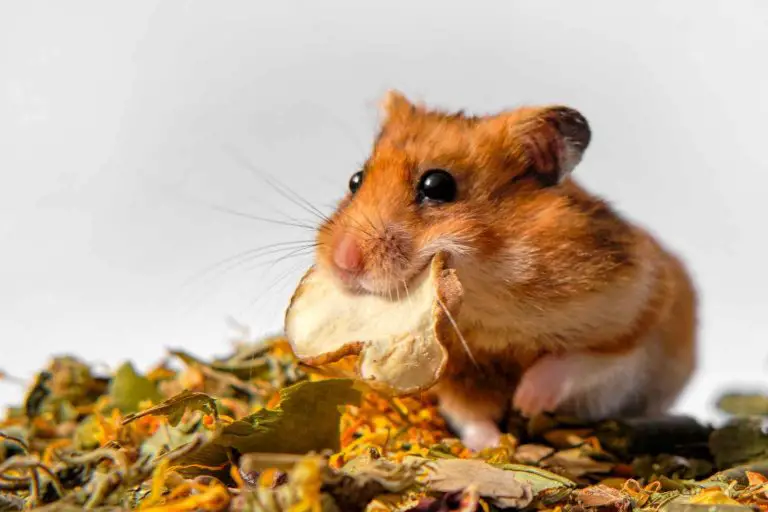Can Hamsters Eat Strawberries? (A Quick Guide for Owners)

Hamster owners often wonder if they can feed their furry pets various types of fruits and vegetables, such as strawberries. It’s essential to know what foods are safe for hamsters and which ones could cause harm. In this article, we will discuss whether strawberries are a suitable option for a hamster’s diet.
Strawberries are a delightful and nutritious fruit that many humans enjoy, packed with vitamins and minerals. However, the nutritional needs of hamsters are different from those of humans. Therefore, it’s crucial to consider how strawberries might affect a hamster’s health and wellbeing.
It turns out that hamsters can indeed eat strawberries, but there are few important factors to keep in mind. As their diet mainly consists of commercial hamster food, vegetables, seeds, nuts, and grains, adding fruits like strawberries in moderation is essential to prevent upsetting the balance of their nutritional intake. Additionally, proper preparation of the fruit is vital to safeguard the hamster’s health.
Can Hamsters Eat Strawberries?
Hamsters can indeed eat strawberries, but it is important to offer them in moderation. Strawberries are a good source of vitamins, minerals, and antioxidants that can benefit a hamster’s health. However, these small fruits also contain sugar, which can be harmful to hamsters in excessive amounts.
When introducing strawberries to your hamster’s diet, start with a small piece to see if they enjoy the taste and to monitor for any potential allergic reactions. If your hamster tolerates the fruit well and seems to enjoy it, you can gradually offer slightly larger portions.
Keep in mind that strawberries should be considered a treat and not a staple of your hamster’s diet. Aim to provide strawberries no more than once or twice per week, while ensuring that their primary diet consists of a high-quality commercial hamster food, fresh vegetables, and occasional seeds and nuts.
Before feeding strawberries to your hamster, make sure to wash the fruit thoroughly to remove any traces of pesticides or other contaminants. Cut the strawberry into small, manageable pieces, and offer them to your hamster in a clean dish or in their cage.
If you notice any negative reactions or changes in your hamster’s health after offering strawberries, discontinue feeding them the fruit and consult with a veterinarian for advice.
Health Benefits of Strawberries
Strawberries are not only a delicious treat but also a nutritious fruit that can provide numerous health benefits. The following sub-sections will cover the various vitamins, minerals, antioxidants, and fiber found in strawberries and their potential benefits for both humans and hamsters.
Vitamins and Minerals
Strawberries are rich in essential vitamins and minerals, making them a healthy addition to a diet. Some of the key nutrients found in strawberries include:
- Vitamin C: important for immune system function and skin health
- Potassium: helps regulate fluid balance, muscle contractions, and nerve signals
- Magnesium: essential for bone health, energy production, and nerve function
- Manganese: supports bone development and metabolism
- Copper: aids in iron absorption and contributes to energy production
- Iron: crucial for red blood cell formation and overall health
Antioxidants
Strawberries are also a great source of antioxidants, which are compounds that help neutralize harmful free radicals in the body. These antioxidants have been linked to a reduced risk of chronic diseases, such as heart disease and certain types of cancer. Some examples of the powerful antioxidants found in strawberries include:
- Anthocyanins: give strawberries their vibrant red color and are associated with reduced inflammation and oxidative stress
- Ellagic acid: may have anti-cancer properties and can help protect the skin from UV damage
- Quercetin: a flavonoid that may lower blood pressure and reduce the risk of heart disease
Fiber
Lastly, strawberries contain a moderate amount of dietary fiber, which can be beneficial for both humans and hamsters. Fiber is essential for maintaining healthy digestion and preventing constipation. Additionally, fiber can help control blood sugar levels, lower cholesterol, and keep you feeling fuller for longer periods of time.
Risks and Dangers
While strawberries can be a delicious treat for hamsters, there are some potential risks and dangers to consider.
High Sugar Content
Strawberries contain a high amount of sugar, which can lead to health issues such as diabetes and obesity in hamsters if consumed in large quantities. To avoid these issues, it’s essential to limit your hamster’s intake of strawberries and provide a balanced diet consisting mainly of their regular hamster food.
Pesticides and Mold
Fruits like strawberries may be exposed to pesticides during production, which can be harmful to your hamster. To minimize the risk of pesticide exposure, always wash strawberries thoroughly before feeding them to your pet.
In addition, strawberries can grow mold if not stored or handled properly. Moldy strawberries should never be given to your hamster, as it can cause digestive issues and illness. Always inspect the fruit for signs of mold and spoilage before offering it to your hamster.
Possible Digestive Issues
Introducing new foods to your hamster’s diet may lead to digestive issues such as diarrhea, upset stomach, or constipation. It’s essential to monitor your hamster for any signs of these issues after feeding them strawberries. If your pet experiences any adverse reactions, it may be best to eliminate strawberries from their diet entirely.
If your hamster doesn’t show signs of digestive problems, it’s still crucial to limit their strawberry consumption. Offering strawberries as an occasional treat rather than a regular part of their diet can help prevent potential health risks associated with their high sugar content and the possibility of pesticide exposure.
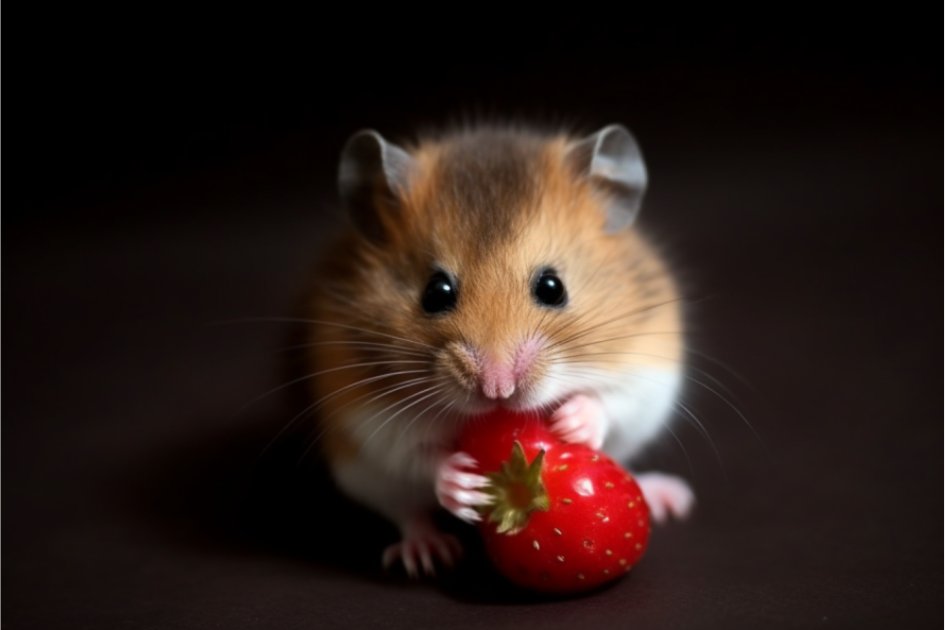
Feeding Strawberries to Hamsters
Feeding strawberries to hamsters can be a delightful treat for your furry friend, but it is essential to do so properly to ensure their health and safety.
Portion Size and Moderation
Hamsters should consume strawberries in moderation to avoid any potential health issues. The portion size must be small, with only about one-quarter to half of a small strawberry per feeding. Feeding strawberries too frequently or in large quantities can lead to digestive issues such as diarrhea.
Keep in mind that strawberries are high in sugar and should be considered a sweet treat in a hamster’s diet, not a staple food. It is advisable to offer strawberries no more than once or twice a week.
Preparing and Serving Strawberries
When preparing strawberries for your hamster, it is crucial to select fresh, organic strawberries free from pesticides and other harmful chemicals. Dried strawberries should be avoided due to their high sugar content and potential for bacterial growth.
Make sure to wash the strawberries thoroughly before serving. Remove the leaves and stem, as strawberries leaves can potentially cause digestive issues. It is safe to serve small pieces of fresh strawberry directly to your hamster without the need for further preparation.
Alternatives and Variety
Although hamsters enjoy sweet treats like strawberries, it is essential to provide them with a varied diet to ensure they receive all the necessary nutrients. Some other safe and healthy fruit options for hamsters include:
- Blueberries
- Bananas
- Apples (without seeds)
- Watermelon (seedless)
Additionally, fresh veggies such as cucumber and leafy greens can provide essential nutrients to your hamster’s diet. It is essential to balance sweet treats like strawberries with a variety of fruits, vegetables, and pellets to maintain a well-rounded diet for your pet.
Hamster Diet and Nutrition
Hamsters are small, omnivorous animals that require a well-balanced diet to stay healthy and happy. Their nutritional needs can be met through a combination of pellets, fresh fruits, vegetables, and occasional treats. In this section, we will explore the components of a balanced hamster diet, some foods to avoid, and ways to monitor your hamster’s overall health.
Balanced Diet Components
A healthy hamster diet consists of the following:
- Pellets: Provide essential nutrients, fiber, and minerals.
- Fresh vegetables: Offer additional vitamins and nutrients.
- Fresh fruits: Serve as occasional treats due to their sugar content.
- Water: Fresh, clean water should be available at all times.
Some ideal fruits and vegetables for hamsters include carrots, pears, blackberries, and small portions of strawberries. Nuts can also be given as occasional treats, but be cautious not to overfeed as they are high in fat.
Foods to Avoid
There are certain foods that can be harmful to hamsters and should be avoided. These include:
- Grapes: Can cause digestive issues or even kidney failure.
- Dried fruit: High in sugar, which can lead to health issues.
- Some fresh fruits: High in sugar, only feed in small amounts.
- Excess bedding: Can be accidentally ingested and cause blockages.
Always consult with a veterinarian if unsure about the safety of a particular food item.
Monitoring Hamster Health
Regular observation and attention to your hamster’s well-being are crucial in ensuring they maintain a healthy lifestyle. Watch for any changes in their eating habits, weight, or behavior. If you notice anything unusual or concerning, it is best to consult your veterinarian for further advice.
By providing your hamster with a balanced diet, including an appropriate mix of fruit, vegetables, and supplemental pellets, you can support their overall health and well-being. Remember to consult with a professional if you have any questions or concerns about your hamster’s diet and nutritional needs.
Different Types of Hamsters
When discussing the diet of hamsters, it’s essential to consider the different types of hamsters, as their nutritional needs may vary. This section will cover Syrian, Chinese, and Dwarf Hamsters, including the baby hamster diet and specifics of the Campbell’s Dwarf Hamster.
Syrian Hamsters
Syrian Hamsters, also known as Golden Hamsters, are one of the most common pet hamsters. Being omnivorous, their diet consists of seeds, grains, vegetables, and occasional protein sources like insects. Strawberries can be included in their diet but should be given in moderation due to their high sugar content.
For baby Syrian Hamsters, introduce fresh fruits like strawberries gradually and in smaller portions. Monitoring their reaction is crucial to ensure no adverse effects on their digestive system.
Chinese Hamsters
Chinese Hamsters are another popular species with particular nutritional requirements. Their diet primarily consists of seeds, grains, vegetables, and fruit. Similar to Syrian Hamsters, Chinese Hamsters can consume strawberries; however, moderation is key to prevent a sugar imbalance in their diet.
Baby Chinese Hamsters should be introduced to strawberries slowly and in minimal quantities. Observe their digestion and any reactions before increasing fruit consumption.
Dwarf Hamsters
Dwarf Hamsters include both the Campbell’s Dwarf Hamster and the Roborovski Dwarf Hamster. Their diet mainly consists of seeds, grains, vegetables, and some fruits. They can have strawberries, but it is essential to keep the portion sizes small due to their susceptibility to diabetes.
For baby Dwarf Hamsters, start with tiny portions of strawberries to avoid any digestive issues. Keep an eye on their reaction and overall health before adding more fruits to their diet.
Additional Health Considerations
Strawberries have several health benefits that can apply to hamsters as well. They are known to have anti-cancer and anti-inflammatory properties, thanks to their antioxidant content. While these qualities are beneficial, it is essential to maintain a balanced diet with a variety of foods to ensure the hamster’s overall wellbeing. Baby hamsters and adult ones have specific dietary needs that should be considered when introducing strawberries in their diet.
When it comes to frozen strawberries, it is vital to thaw them properly and ensure they are at room temperature before feeding them to your hamster, as frozen food is a choking hazard. It is advised to chop the strawberries into small pieces, as this will minimize choking hazards and make it easier for the hamster to consume.
Strawberries are a good source of essential nutrients like zinc, calcium, and dietary fiber, which contribute to healthy growth and development in hamsters. The seeds present on the surface of strawberries provide some additional fiber.
However, excessive consumption of strawberries can lead to weight gain and bloating in hamsters. Maintaining a balanced diet is crucial for the health and wellbeing of your pet. A high-quality, varied diet often includes a mix of timothy hay, hamster mix, and fresh fruits and vegetables on a rotational basis. This method of food rotation ensures that the hamster’s dietary needs are met while avoiding an imbalance in nutrients or over-consumption of any particular food.
Fats, cholesterol, and blood pressure should be taken into account when offering strawberries to your hamster. While they are low in fats and cholesterol, moderation is always key to prevent any negative health impacts. Obesity and other health problems like arthritis are potential dangers that can be exacerbated by poor diet choices or overfeeding your pet.

